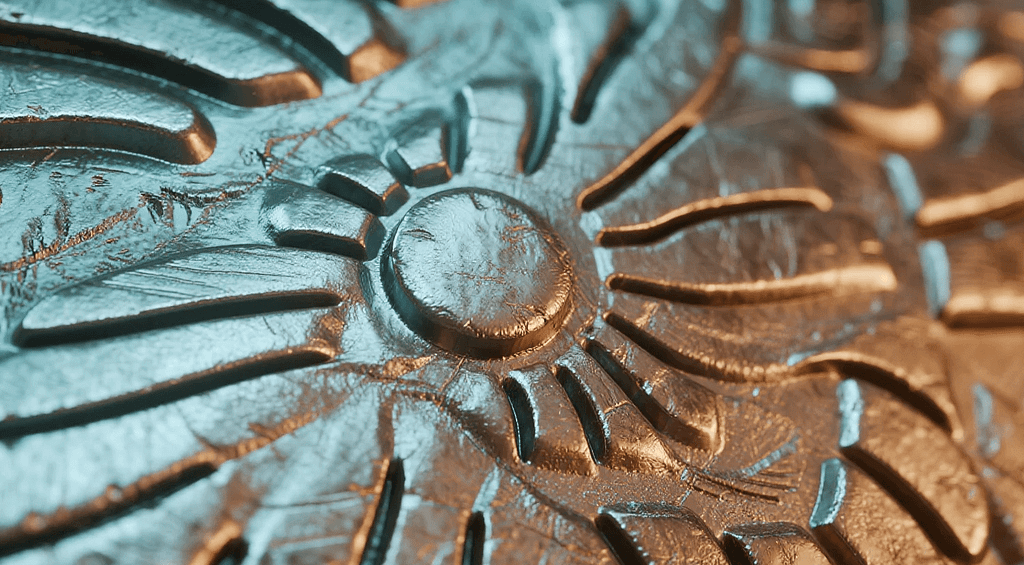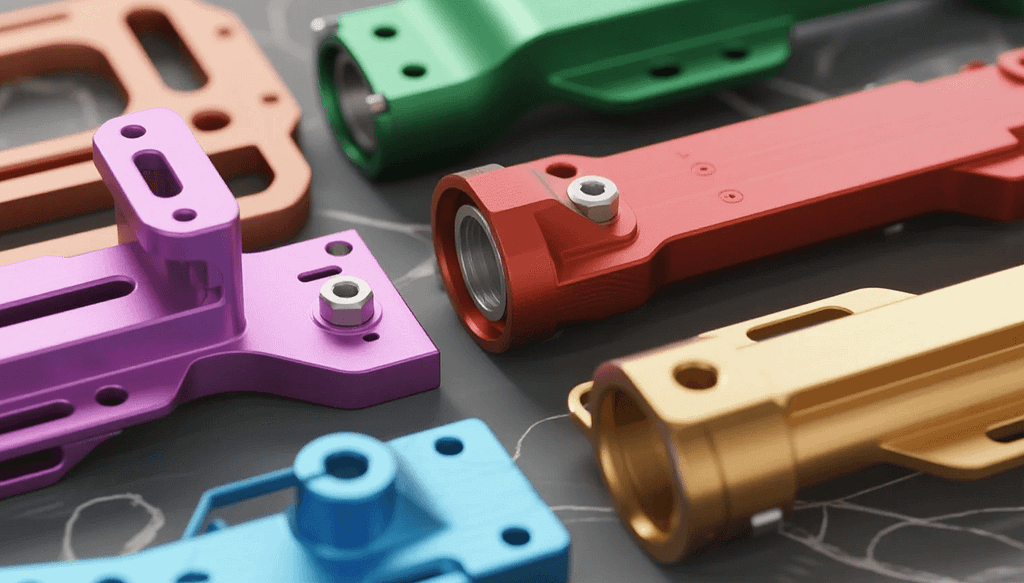Anodized aluminum is a game-changer in the world of manufacturing and product design. It’s a material that often flies under the radar for those outside the industry, yet its properties are absolutely critical for a vast range of applications, from consumer electronics and medical devices to architectural facades and aerospace components. If you’re a product designer, engineer, or procurement manager considering materials for your next project, you’ve likely encountered this option. But what exactly is anodized aluminum, and how can you determine if it’s the ideal choice for your specific manufacturing needs?
To answer that, we first have to understand what makes this material so special. While aluminum itself is known for being lightweight and strong, it’s also relatively soft and prone to corrosion and wear. This is where anodization comes in. Anodization is an electrochemical process that converts the metal’s surface into a durable, porous, and protective oxide layer. It’s a process that’s fundamentally different from a simple coating, like paint or powder coating, because it’s a permanent integration with the underlying material. Instead of adding a layer on top, the aluminum itself is transformed. This transformation gives the material a range of enhanced properties that solve many of the inherent weaknesses of raw aluminum. The result is a surface that is much harder, more corrosion-resistant, and aesthetically versatile.
The Science Behind the Surface

The anodization process begins with a careful cleaning of the aluminum part to remove any impurities. Then, the part is submerged in an electrolyte bath, typically an acid solution like sulfuric acid. An electric current is passed through the bath, with the aluminum part acting as the anode (the positive electrode). This current causes oxygen ions to be released from the acid and combine with the aluminum on the surface of the part. This reaction creates a porous aluminum oxide layer that grows directly out of the base metal.
The thickness and density of this layer can be precisely controlled, which is one of the key advantages of the process. For example, a thinner layer might be used for decorative purposes, while a thicker, more dense layer is perfect for applications requiring extreme durability. The final step is a process called sealing, which closes the pores in the oxide layer. This sealing step is crucial, as it locks in any dyes used for coloring and makes the surface non-porous and highly resistant to stains and corrosion. This entire process, from cleaning to sealing, is what gives anodized aluminum its superior performance.
Key Advantages for Manufacturing

Choosing anodized aluminum for your product offers several significant benefits that can impact a project’s performance, cost, and longevity.
Enhanced Durability and Wear Resistance: The surface of anodized aluminum is significantly harder than raw aluminum. In fact, it’s often compared to sapphire in terms of hardness, making it highly resistant to scratches and abrasions. This makes it an excellent choice for products that will experience frequent handling or are used in harsh industrial environments. Think about consumer electronics like laptop casings and smartphone bodies, where a pristine finish is a key selling point.
Superior Corrosion Resistance: The thick, sealed oxide layer created during the anodization process provides an exceptional barrier against environmental factors like moisture, salt spray, and other chemicals. This is especially critical for products used outdoors, in marine environments, or in industries like food and beverage processing where regular cleaning with harsh chemicals is necessary. This property extends the lifespan of the product and reduces the need for costly replacements or maintenance.
Aesthetic and Cosmetic Flexibility: While some finishes, like powder coating, can add thickness and hide intricate details, anodization maintains the original texture and dimensional integrity of the part. This is vital for precision-machined components where tight tolerances are required. Furthermore, the porous nature of the surface before sealing allows for the introduction of a wide range of organic and inorganic dyes. This means anodized aluminum can be finished in a spectrum of vibrant colors, from classic black and silver to brilliant blues, reds, and even custom shades. This aesthetic versatility makes it a favorite for designers looking to create a unique and visually appealing product.
Electrical Insulation: The aluminum oxide layer is an electrical insulator, a property that is highly useful in many electronic and electrical applications. While raw aluminum is an excellent conductor, its anodized counterpart can be used to prevent short circuits and improve safety in electronic assemblies. This unique combination of properties allows manufacturers to use a single material for both structural and electrical functions.
Environmentally Friendly Process: The anodization process uses fewer hazardous chemicals compared to many other surface treatments, like electroplating. The byproducts are often more easily managed and recycled. Furthermore, since aluminum is a highly recyclable material, choosing anodized aluminum for your product contributes to a more sustainable manufacturing cycle. The durability of the finish also means the product has a longer service life, reducing waste.
When to Choose Anodized Aluminum

With so many advantages, it might seem like anodized aluminum is the solution for every project. However, like any material choice, it’s about matching the material to the application. Here are some ideal use cases where this material truly excels:
- Consumer Electronics: From laptops and tablets to headphones and audio equipment, anodized aluminum provides a lightweight, durable, and premium-feeling finish that elevates the perceived quality of the product.
- Medical Devices: The non-shedding, corrosion-resistant surface of anodized aluminum makes it suitable for medical instruments and equipment that require frequent sterilization.
- Aerospace and Automotive: The strength-to-weight ratio and corrosion resistance of the material are vital for components used in aircraft and high-performance vehicles, where every gram and every measure of reliability counts.
- Architectural Components: Whether it’s for window frames, handrails, or decorative panels, anodized aluminum offers a maintenance-free and visually appealing finish that withstands the elements.
- Precision Machined Parts: When components have tight tolerances or complex geometries, anodization can provide a protective finish without adding significant thickness, ensuring the part fits and functions as intended.
Making the Right Choice for Your Manufacturing Partner
Once you’ve determined that anodized aluminum is the right material for your project, the next step is to find a manufacturing partner who can deliver on your vision. A skilled and experienced precision machining company will not only be able to machine your parts to the exact specifications but also have a deep understanding of the anodization process. They can advise you on the right type of anodization (e.g., Type I, II, or III), the ideal thickness for your application, and the best finishing options.
For example, Type I anodization, also known as chromic acid anodizing, creates a very thin, non-conductive layer, often used for aerospace parts. Type II (sulfuric acid anodizing) is the most common and provides a good balance of durability and cosmetic finish, while Type III (hardcoat anodizing) creates an extremely thick and dense layer, perfect for high-wear components. An expert manufacturer can guide you through these choices to ensure your final product meets all performance and aesthetic requirements.
Ultimately, choosing anodized aluminum is a strategic decision that can significantly enhance the value and longevity of your product. Its unique combination of durability, aesthetics, and environmental benefits makes it a smart and forward-thinking choice for modern manufacturing.
FAQ
Q: Can you anodize any type of aluminum? A: While most aluminum alloys can be anodized, the results can vary. Alloys with a high copper or silicon content, such as 6061 and 7075, are generally good for anodizing, while those with a high percentage of other elements may result in a less clear or consistent finish. It’s always best to consult with your manufacturing partner about the specific alloy.
Q: How does anodization compare to powder coating? A: Anodization is an electrochemical process that grows a protective layer from the base metal, while powder coating is an applied finish. Anodization provides a harder, more wear-resistant surface that doesn’t chip or peel and maintains the original metal’s texture. Powder coating, however, offers a much wider range of colors and can hide surface imperfections.
Q: Does anodized aluminum fade over time? A: The long-term durability of the color depends on the type of dye used and the quality of the sealing process. Inorganic dyes are more resistant to UV light and fading than organic dyes. A high-quality, properly sealed anodized finish will resist fading and maintain its appearance for many years, even in outdoor applications.